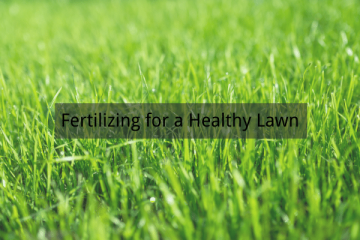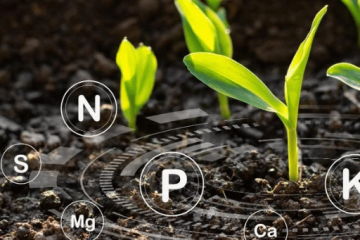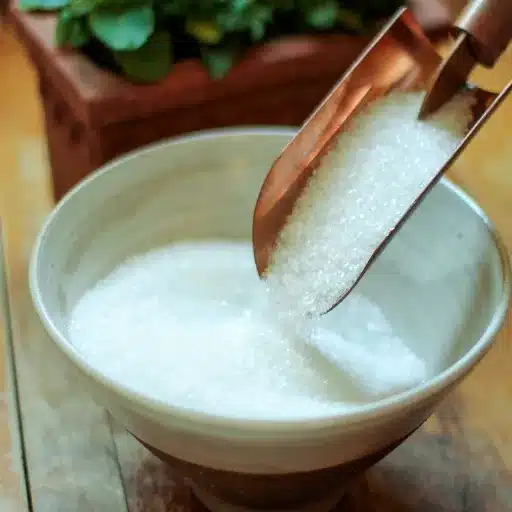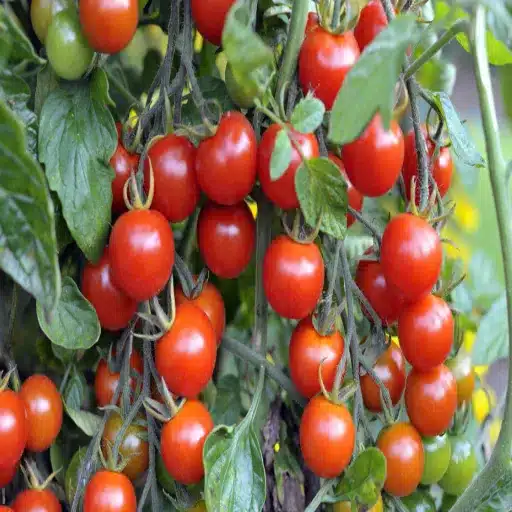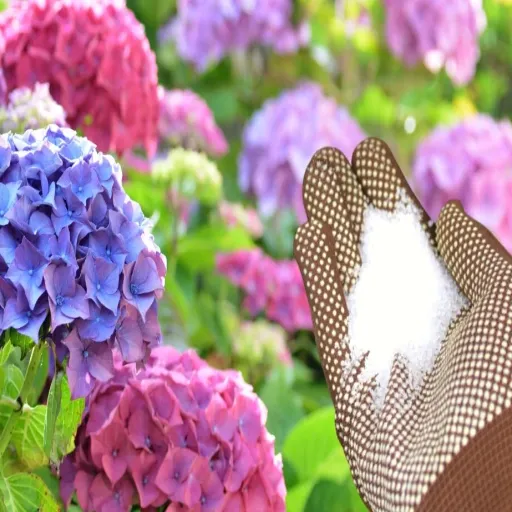To properly maintain a plant’s health, every grower must consider the management of nutrients, especially nitrogen, which impacts a plant’s growth and development. While nitrogen is critical for plant development, using too much of it will result in the overproduction of foliage while drastically reducing the flowers, fruits, and general biodiversity a plant produces. In this blog, I will examine the benefits and science behind low-nitrogen fertilizers and why they are best for promoting sustainable agricultural practices for enhanced soil health.
This blog will break down the nitrogen elements in these fertilizers, what gardening or farming practices they are most effective in, and their overall impact on the agricultural industry. As a bonus, we will also give helpful guidance on choosing and incorporating these fertilizers to create an efficient nutrient garden. By the blog’s conclusion, you should have a more resolved understanding of low-nitrogen fertilizers and how to utilize them in your plant care routine for a balanced approach toward growth and sustainability.
What is Low Nitrogen Fertilizer and Why Use It?
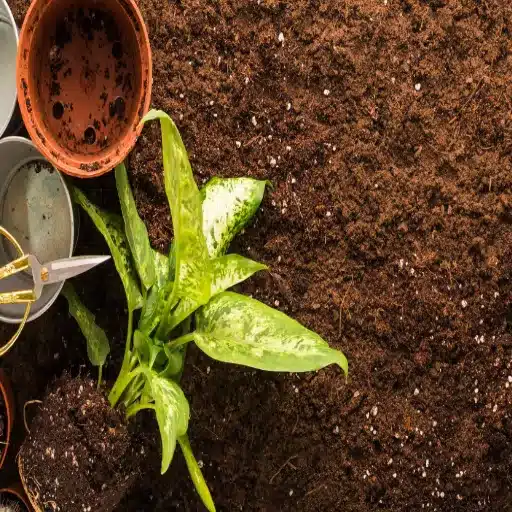
Low acid-nitrogen fertilizers replace standard fertilizers with less nitrogen than recommended. This type of fertilizer is primarily used in agriculture when excessive nitrogen can stunt the growth of some flowering plants and root vegetables or where specific varieties of flowering plants are grown. Using these fertilizers ensures that a gardener does not over-fertilize, which usually leads to excessive shoots but insufficient flowers or fruits. These fertilizers also contribute to sustainable soil health because they do not allow a buildup of nitrogen that can disrupt the beneficial microorganisms in the soil.
Understanding Nitrogen in Fertilizers
From what I understand, nitrogen is an essential macronutrient and directly correlates to the growth of the leaves and the entire plant. However, excess nitrogen can hinder flowering and fruiting because foliage grows excessively large. I gather that using low-nitrogen fertilizers for specific plants helps sensitive blooms and better prevents nutrient imbalances from happening. The objective is to choose the correct fertilizer type according to the plant growth stage while providing soil-friendly nutrient quantity restrictions.
Benefits of Using Low Nitrogen Fertilizer
- Improved Flowering and Fruiting
Fertilizers with low nitrogen contents promote flowering and fruiting, as plants are motivated to produce more flowers and fruits instead of growing leaves. This is highly effective for flowering and fruiting plants such as tomatoes, peppers, and roses. Plants achieve better reproductive development and enhanced yield quality by using nutrients more efficiently.
- Balanced Nutrient Uptake
Excessive nitrogen causes imbalanced nutrition, leading to low uptake of phosphorus and potassium, which are essential for root and bloom health. Reducing nitrogen also allows for the better prevention of these imbalances. Low-nitrogen fertilizers promote healthier root systems and greater stomatal macronutrient-capturing efficiency from the soil.
- Prevention of Soil Degradation
The overuse of high-nitrogen fertilizers results in the soil becoming acidic and nutrients being lost over time. Low-nitrogen fertilizers prevent one nutrient from being overconcentrated, helping to sustain soil fertility. In low-nitrogen variants, the optimal range for these ratios is between 1% and 5%, depending on the plant’s specific needs.
- Reduced Risk of Plant Stress
High-nitrogen plants are highly susceptible to pests and diseases. Lowering the nitrogen concentration reduces the risk of plant damage, as nitrogen represses robust plant structural development, immune responses, and adaptability.
- Eco-Friendly Use
Using fertilizers increases the nitrogen concentration in water systems, leading to eutrophication, which disrupts the food chain and other activities in the aquatic ecosystems. Fewer nitrogen fertilizers prevent the problem by providing a lower potential for runoff. When used responsibly, these fertilizers do not contravene most low tillage farming methods, where nitrogen fertilizer is often not more than twenty to fifty pounds per acre for most non-cereal crops.
The soil testing results and the crop’s growth stage should be considered when choosing a low-nitrogen fertilizer. Standard low-nitrogen formulations include ratios such as 2-10-10 or 5-10-10, emphasizing phosphorus and potassium that do not forgo flowering and rooting development as primary goals.
Comparing Low Nitrogen with High Nitrogen Fertilizers
The key difference between high-nitrogen and low-nitrogen fertilizers is the crops themselves and how they would be administered or used. Low-nitrogen formulations mainly focus on improving roots, blossoming, and fruiting muscles, which are perfect for later stages of growth or plants that require minimum vegetative growth. Unlike high-nitrogen fertilizers, low-nitrogen formulations focus on augmenting foliar and stem development that aids rapid vegetative growth at early stages for crops that need leafy greens. Choosing one over the other should wholly depend on the soil test results, plant growth phases, and the given agricultural goals to acquire maximum yield.
How Does Low Nitrogen Fertilizer Impact Plant Growth?
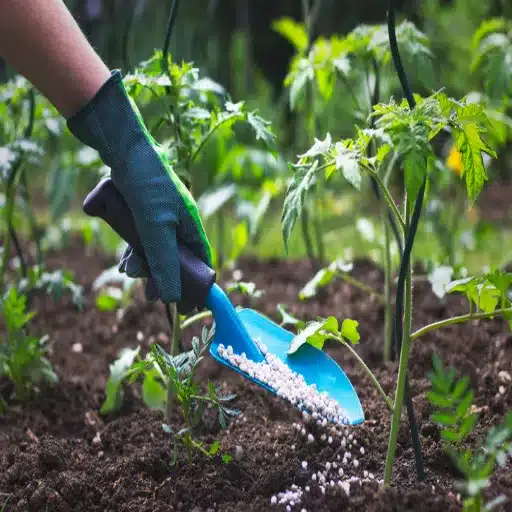
As the name suggests, low-nitrogen fertilizer constrains plant growth by restricting foliage and stem development to encourage more rooting and reproductive organ structures, including flowers and fruits. Mid-flowering and fruiting stages make this fertilizer very handy, where aggressive vegetative growth could eat away the energy required for high-yielding crops. It also mitigates challenges such as late maturing and poor-quality fruit conditions. Therefore, these fertilizers are indispensable in crops that experience low levels of vegetative development and high maturity rates.
The Role of Nutrients in Root Development
While analyzing the development of roots, it is crucial to point out that some minerals are instrumental in enabling proper and efficient root systems. One of them is phosphorus, whose importance cannot be overemphasized as it facilitates the energy transfer within the plant, which nurtures bone and plant root deepening. Potassium helps enhance the root strength, increase the plant’s stress resistance, and aid in water absorption. Iron and Zinc, which are termed micronutrients, also assist in root enlargement by catalyzing essential biochemical reactions and processes within cells. To bring the roots of the plants in focus, a controlled dosage of fertilizer application should be applied to the soil conditions and plant requirements to improve root growth and plant health in general.
Impact on Flowering Plants and Grass
For one, the use of nutrients on flowering plants and grass affects their growth, and I have noted that their balanced ratios seem to be macronutrients. It is understated that for flowering plants, phosphorous macronutrient aids in forming blooms, improves the bloom’s beauty, and results in greater than everyday colored flowers. For first and second blooming, grass grows well only with nitrogen fertilizers, which increase chlorophyll content and help develop green grass. Both plants absorb nutrients better with proper soil aeration and moisture, resulting in growth and health.
How do you apply fertilizer correctly for the best results?

- Assess Soil Composition
Conduct a soil test to identify nutrient deficiencies, pH levels, and overall soil health. This information ensures precise fertilizer selection for maximum effectiveness.
- Choose the Right Fertilizer
Select a fertilizer type and formulation tailored to the specific needs of your plants or grass. Consider whether a slow-release or quick-release option is more appropriate based on growth goals.
- Determine Proper Timing
Apply fertilizer during your plants’ optimal growth period. For example, fertilize turfgrass in early spring or fall, while seasonal flowering plants benefit most during the active growing season.
- Calculate Accurate Application Rates
Follow the manufacturer’s recommended application rate to avoid over-fertilizing, which can damage plants and contribute to nutrient runoff.
- Apply Evenly
Use a spreader or appropriate equipment to distribute the fertilizer uniformly across the soil or lawn. This prevents patchy growth and ensures consistent feeding.
- Water Thoroughly After Application
Irrigate the area after applying fertilizer to help nutrients dissolve and penetrate the root zone efficiently, reducing the risk of surface runoff.
- Monitor and Adjust
Observe plant and soil health regularly after application. Adjust future applications based on visible results and any follow-up soil testing data.
Choosing the Right Type of Fertilizer
Using the correct fertilizer should be based on the requirements of the plants and the soil’s constituents. I first do a soil test to understand what nutrients are lacking or disproportioned. After analyzing the results, I choose a fertilizer with the most adequate NPK ratio (nitrogen, phosphorus, potassium). I will select a fertilizer with high nitrogen content to increase the foliage. Moreover, organic options like composted manure have more natural, slow-release effects than synthetic fertilizers, which are more immediate. The plant, its growth stage, and other climatic factors also influence my choice.
Effective Fertilizer Application Methods
Practical fertilizer application involves selecting methods that maximize plant nutrient uptake while minimizing environmental impact. Here are some standard application methods, along with technical considerations:
- Broadcasting
Broadcasting involves spreading fertilizer evenly across the soil surface. This method is suitable for large-scale crops or lawns. However, it often requires incorporation into the soil to prevent nutrient loss through volatilization or runoff. Parameter: Apply 30-60 lb/acre for granular fertilizers, integrating with light tilling approximately 2-4 inches deep for best results.
- Banding
Banding places fertilizer in concentrated strips near planting rows or seeds. This technique enhances nutrient availability during early plant growth stages. Parameter: Place fertilizer 2 inches below and 2 inches to the side of seeds to avoid root burn. Adjust rates based on crop type, typically 10-20 lb/acre for starter applications.
- Side-dressing
Side-dressing involves targeting the fertilizer near the base of the plant during growth. This method supports ongoing nutrient demand. Parameter: For nitrogen-based fertilizers, use 20-50 lb/acre as a mid-season application.
- Foliar Feeding
Foliar feeding involves spraying dissolved nutrients directly onto leaves, which helps correct micronutrient deficiencies. Parameter: Ensure the spray concentration is typically 1-2% (by weight) to prevent leaf scorch. Apply in the early morning or evening to reduce evaporation.
- Fertigation
Fertilizer applied through irrigation systems, known as fertigation, ensures precise nutrient delivery directly to the root zone. Parameter: Maintain a solution concentration of 100-200 ppm for general nutrients or 5-10 ppm for micronutrients, depending on the crop’s nutrient uptake requirements.
- Deep Placement
Deep placement involves burying fertilizer near root zones, ideal for minimizing nutrient loss in high-rainfall regions. Parameter: Typically, 50-80 lb/acre is recommended, depending on root depth and soil texture.
Each method should be tailored to the crop type, growth stage, soil condition, and environmental factors to ensure efficient and sustainable fertilization.
When and How to Apply Fertilizer for Lawn Care
I recommend applying fertilizer for effective lawn care during the growing season, typically in spring and fall for cool-season grasses and late spring through summer for warm-season grasses. Timing is crucial—schedule applications early in the morning or late in the evening to minimize stress on the grass and reduce evaporation. Always start with a soil test to determine nutrient needs.
Technical Parameters:
- Application Rate: Use 1.0 lb of nitrogen per 1,000 square feet per application unless otherwise specified in the soil test results. For most lawns, avoid exceeding 4.0 lb of nitrogen per 1,000 square feet annually.
- Fertilizer Type:
- To promote steady growth for cool-season lawns, use a fertilizer with a nitrogen-phosphorus-potassium (N-P-K) ratio of approximately 3-1-2 or 4-1-2.
- For warm-season lawns, opt for a high-nitrogen formula with an N-P-K ratio like 16-4-8.
- Watering Post Application: Water lightly after applying granular fertilizer to ensure nutrients reach the soil while avoiding runoff.
Following these guidelines ensures efficient nutrient absorption, encourages healthy turf growth, and minimizes environmental impact.
What Nutrients are Present in Low Nitrogen Fertilizer?
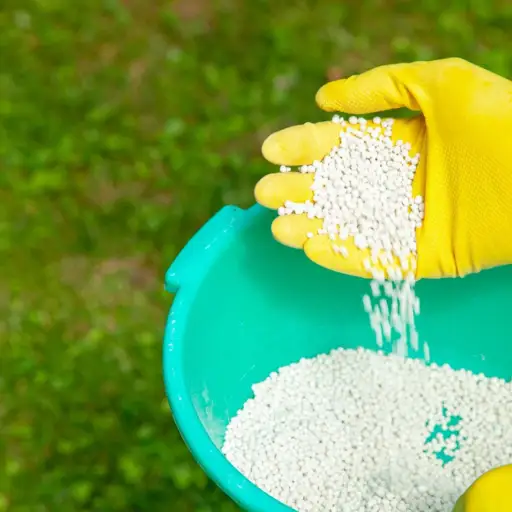
Fertilizers with low nitrogen content tend to emphasize other essential components that aid plants’ well-being and balance the soil. These fertilizers also have more significant amounts of phosphorus (P) and potassium (K) because these elements are needed for more substantial growth in roots, plants, and blooms. For example, 5-10-10 is an N-P-K ratio with low nitrogen content and higher phosphorus and potassium levels. Moreover, these low-nitrogen fertilizers usually have secondary nutrients like calcium (Ca), magnesium (Mg), sulfur (S), and other micronutrients that include iron (Fe), manganese (Mn), and zinc (Zn) to remedy soil deficiencies and offer exceptional support to particular plants.
Understanding NPK Ratios
When analyzing NPK ratios, I drill in on the three nutrients represented by the numbers: nitrogen (N), phosphorus (P), and potassium (K). The first number (nitrogen) enhances the growth of plants and leaves. The second number represents phosphorus needed to create roots, flowers, and fruits. And the last number, potassium, improves overall plant conditions, disease resistance, and even water utilization efficiency. Plants that need more nutrients, such as roots and blooms, would benefit from the 5-10-10 fertilizer, which has a lower nitrogen concentration and higher phosphorus and potassium levels. Understanding these ratios helps me to better apply specific nutrients for the best growth.
The Importance of Phosphorus and Potassium in Fertilizers
I concentrate on phosphorus and potassium’s unique roles in determining plant growth, which helps me choose and apply fertilizers effectively. Phosphorus is vital in energy transfer and aids DNA synthesis, photosynthesis, and root development. Because it helps in the reproductive growth of plants, it affects their ability to flower and bear fruits. On the other hand, potassium activates enzymes, strengthens cell walls, controls water use, and improves drought and disease resistance. Through the managed application of fertilizers, I can meet the nutritional needs of plants and enhance their growth, productivity, and health regardless of the growing conditions.
How Organic Fertilizer Differs from Synthetic Options
The differences between organic and synthetic fertilizers primarily manifest in their formulation, application effects, and sustainability. For instance, organic fertilizers include compost, dung, and bone meal, which provide nutrients but will take time to break down and release the nutrients. However, it significantly improves the health of the soil in the long term. In contrast, superficial fertilizers are formulated and chemically manufactured. These items are ready to use as they contain highly concentrated nutrients, which are relatively cheap but can significantly affect the soil’s health in the future. Depending on the context, organic fertilizer is often preferred in more eco-friendly enterprises trying to encourage balanced ecosystems in the soil. In controlled environments, synthetic fertilizers are used as the primary source of nutrition for rapid plant growth. This will also, in turn, depend on the requirements of the plants and the soil management.
References
-
Low-nitrogen fertilization adapts the rice root microbiome to a low-nutrient environment by changing biogeochemical functions. This study explores how low-nitrogen fertilization affects the rice root microbiome and its biogeochemical functions.
-
The effects of mulch and nitrogen fertilizer on the soil environment of crop plants: Discusses the impact of nitrogen fertilizers and mulch on soil health and crop yield.
-
Enhancing nitrogen use efficiency in crop plants: This section focuses on strategies to improve nitrogen use efficiency in crops, including low-nitrogen approaches.
Frequently Asked Questions (FAQ)
Q: What is a low-nitrogen fertilizer, and why is it beneficial for healthy plant growth?
A: A low-nitrogen fertilizer is formulated with a reduced nitrogen content, which helps to promote strong root growth and overall plant health. This fertilizer is beneficial because it prevents excessive foliage growth, allowing plants to develop robust root systems and better absorb essential nutrients.
Q: How do nutrients in fertilizer affect plant growth?
A: The nutrients in fertilizer, such as nitrogen, phosphorus, and potassium, play crucial roles in plant growth. Nitrogen supports leaf development, phosphorus aids in root growth, and potassium strengthens the plant’s overall structure, helping it resist diseases and stress.
Q: What are the benefits of lawn fertilizer with low nitrogen content?
A: Using lawn fertilizer with low nitrogen content helps maintain a healthy lawn by promoting strong root systems rather than excessive leaf growth. This encourages a more sustainable, resilient lawn that can better withstand environmental stressors.
Q: When should I apply low-nitrogen fertilizer to my garden?
A: Low-nitrogen fertilizer is best applied in the summer and fall. During these seasons, plants must strengthen their root systems and store energy rather than produce lush foliage, making low-nitrogen formulations ideal.
Q: Can low-nitrogen fertilizers be used on all types of plants?
A: Yes, low-nitrogen fertilizers can benefit various plants, particularly those that need strong roots, like tomatoes and new lawns. However, choosing the best formulation based on specific plant needs and lawn type is essential.
Q: How does liquid fertilizer compare to granular fertilizer regarding nitrogen content?
A: Liquid fertilizer, due to its soluble nature, typically offers more immediate nutrient uptake, while granular fertilizer provides a slower, more controlled release. Both can be formulated with low nitrogen content to suit different gardening needs.
Q: What role does urea nitrogen play in plant fertilizers?
A: Urea nitrogen is a highly concentrated nitrogen source in many fertilizers. While it promotes rapid growth, using formulations with lower urea nitrogen content can help prevent overgrowth and ensure balanced nutrient absorption, fostering healthier plant development.
Q: How can I choose the best plant fertilizer for lush growth without excessive nitrogen?
A: To choose the best plant fertilizer, look for products with balanced nutrient ratios that are low in nitrogen but rich in phosphorus and potassium. This ensures plants have the necessary elements to grow lush and healthy without the risk of overstimulating leaf production.
Q: Are natural fertilizers effective as low-nitrogen options?
A: Yes, natural fertilizers can be effective as low-nitrogen options. They typically release nutrients slowly and gradually, enabling plants to absorb them efficiently, which supports strong root development and overall plant health.

